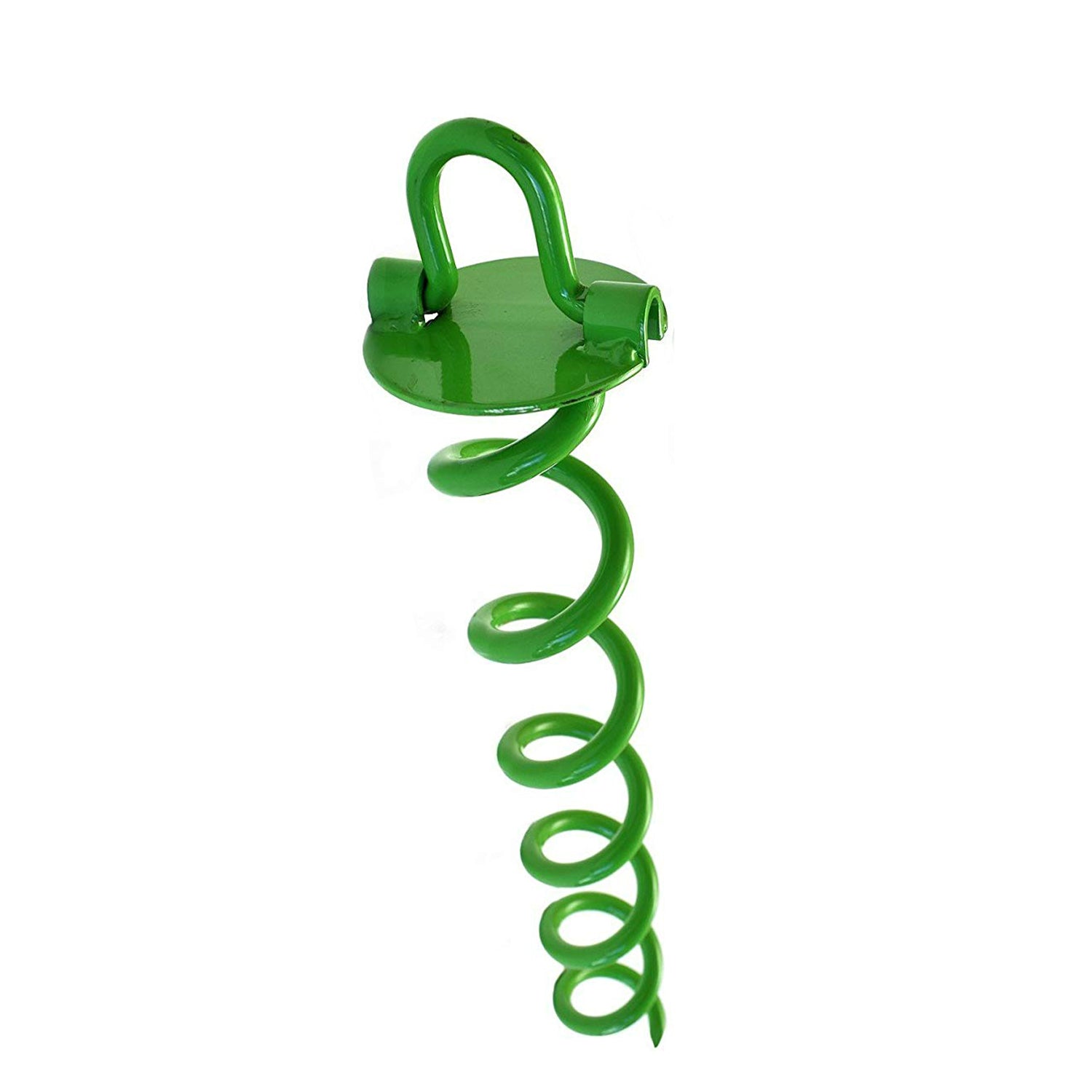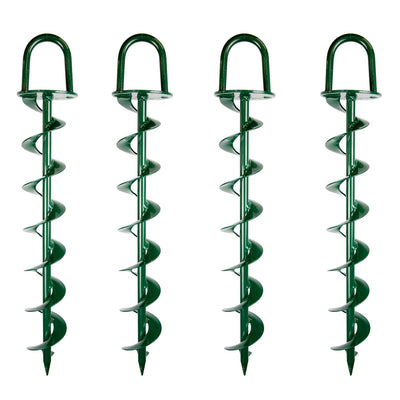The Science Behind a Robust Ground Anchor System
The Science Behind a Robust Ground Anchor System
Blog Article
Check Out the Different Kinds of Ground Support for Your Following Task
From auger supports, which succeed in diverse dirt problems, to stake anchors developed for temporary installments, the options are countless. Additionally, concrete and screw anchors existing special benefits in certain circumstances, while deadman supports are customized for applications needing resistance to side pressures.

Auger Anchors
Auger supports are a prominent choice in numerous building and landscaping projects because of their special design and efficient anchoring abilities. These supports contain a helical screw-like shaft that is driven into the ground, enabling a safe and secure hold. The spiral design helps with simple installation and makes the most of resistance against lateral forces, making auger anchors particularly effective in applications such as fencing, momentary frameworks, and erosion control.
The setup procedure of auger anchors is relatively simple. They can be manually or mechanically mounted, depending on the size and called for deepness. This adaptability enables their usage in diverse dirt conditions, from sandy to clayey terrains. Auger anchors can be easily gotten rid of and reused, which includes to their cost-effectiveness and sustainability.
Among the substantial benefits of auger supports is their capacity to distribute tons evenly across the bordering soil, decreasing the threat of dirt disturbance and decreasing ecological influence. Furthermore, they are less vulnerable to loosening up or heaving with time compared to conventional securing approaches. Auger supports are an outstanding selection for projects needing sturdy and reliable anchoring options.

Stake Anchors
When it concerns securing structures in a range of outside applications, stake anchors supply a uncomplicated and reliable service. These supports are normally constructed from sturdy products such as steel or light weight aluminum, developed to withstand environmental stress and anxieties while supplying ideal security. Their simple design allows for fast setup, making them an optimal option for temporary or long-term anchoring requirements.
Risk anchors are particularly valuable in securing outdoors tents, canopies, and various other lightweight frameworks against wind and climate. They operate by being driven right into the ground at an angle, producing a solid hold that stands up to pull-out forces - Ground Anchor. The efficiency of risk anchors depends upon a number of elements, including soil kind, wetness content, and the angle of installation
For included safety and security, many stake anchors include accessory points for straps or ropes, enabling tension modifications as necessary. In applications such as landscaping or building, they can properly stabilize tools or structures on uneven terrain. On the whole, stake anchors offer a cost-effective and functional option for securing various exterior installments, making them a preferred selection for service providers and DIY fanatics alike.
Concrete Anchors
Concrete supports provide a robust service for securing frameworks to concrete surfaces, guaranteeing stability and safety in numerous applications. These supports are crucial for tasks ranging from domestic constructions to large-scale industrial setups. They are available in different kinds, consisting of expansion anchors, glue anchors, and undercut supports, each made for particular load needs and ecological conditions.
Adhesive supports use high-strength epoxy or resin to bond the support to the concrete, using premium load-bearing capabilities, especially in cracked concrete scenarios. Undercut supports produce a distinct form within the concrete, providing exceptional holding power, specifically in applications where tensile loads are common.
Picking the suitable concrete anchor involves taking into consideration aspects such as the weight of the tons, the problem of the concrete, and ecological conditions. Proper setup techniques are essential to make certain optimum efficiency and integrity. When carried out correctly, concrete supports dramatically enhance the architectural integrity of different projects, making them vital in modern-day construction methods. Recognizing the particular demands of your project will assist in selecting the right kind of concrete support for the job.
Screw Anchors

Screw supports are a functional securing option that can be properly used in a selection of applications where typical concrete anchors may not be adequate. These supports contain a helical layout that allows them to be easily driven right into dig this the ground, making them ideal for usage in soil and various other substrates. Their distinct structure supplies outstanding holding power and resistance to pull-out forces, making them suitable for countless jobs, from landscape design to architectural assistance.
One of the primary benefits of screw supports is their simplicity of installment. They call for marginal devices and can often be installed without the need for excavation, which conserves both time and labor costs. In addition, screw anchors can be removed and reused, using a sustainable remedy for temporary applications.
Screw anchors are especially beneficial in areas where dirt problems are testing, such as loosened or sandy soils. Their ability to be set up at varying midsts allows for personalization based on details project requirements. Overall, screw anchors give a dependable and reliable securing method, making them an exceptional selection for specialists and engineers seeking effective solutions for their tasks.
Deadman Anchors
Deadman supports act as a durable service for stabilizing structures in tough conditions, especially where typical anchoring techniques may fall short. These anchors consist of large, hefty things buried underground, which develop resistance against side forces. The style normally includes a horizontal element, such as a block of concrete or a steel plate, hidden in the dirt, to which straps or cords are attached.
The effectiveness of deadman supports depends on their ability to disperse lots over a larger location, lowering look at more info the risk of failure in unsteady dirt conditions. They are specifically helpful in applications such as keeping wall surfaces, short-lived structures, and slope stabilization, where dirt activity can compromise the integrity of the framework.
Setup of deadman anchors calls for cautious preparation to guarantee they are placed at the proper deepness and alignment, optimizing their load-bearing capability. While they may need more labor and product than light-weight supports, their dependability in damaging problems makes them indispensable for lasting jobs. Deadman anchors are functional and can be adjusted to numerous applications, look at this site making them a best selection for designers dealing with distinct challenges in their projects.
Conclusion
Auger anchors excel in diverse dirt problems, while stake supports match momentary applications. For concrete surface areas, expansion and adhesive supports give trusted choices, and screw supports provide flexibility in difficult terrains.
Furthermore, concrete and screw anchors existing unique benefits in specific circumstances, while deadman supports are tailored for applications calling for resistance to lateral forces - Ground Anchor.Auger supports are a prominent selection in numerous building and construction and landscaping tasks due to their distinct layout and efficient anchoring capacities. They come in various types, consisting of development supports, glue anchors, and undercut supports, each made for particular tons demands and environmental conditions
Sticky supports use high-strength epoxy or resin to bond the anchor to the concrete, offering superior load-bearing capabilities, particularly in cracked concrete scenarios. On the whole, screw supports supply a reliable and trusted anchoring approach, making them a superb selection for specialists and engineers looking for effective options for their projects.
Report this page